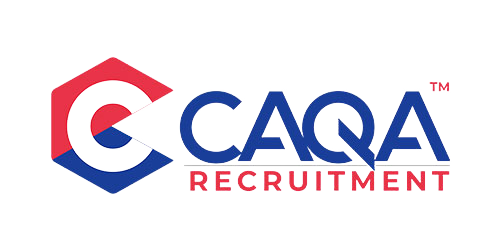In the annals of business history, few stories are as instructive as the fall of Blockbuster. The retail giant, which once dominated home entertainment, failed to adapt to the disruptive emergence of streaming services and faded into irrelevance. This tale of missed opportunities and rigid adherence to tradition holds valuable lessons for vocational education and training (VET) providers today. In a world of rapid technological advancements, evolving workforce demands, and shifting learner preferences, the parallels between Blockbuster's decline and the challenges facing traditional education systems are striking. If VET institutions do not adapt, they risk being left behind.
This article explores how VET providers can learn from Blockbuster’s mistakes, reimagine their models, and position themselves as pioneers in the evolving education landscape.
The Downfall of Blockbuster and Outdated Educational Models
Blockbuster's demise was rooted in its unwillingness to adapt to the needs of its customers. The rise of on-demand services like Netflix rendered Blockbuster’s reliance on physical stores and punitive late fees obsolete. Similarly, many VET institutions cling to outdated methods such as rigid schedules, standardised testing, and classroom-based learning despite the increasing demand for personalised, tech-enabled, and flexible educational models.
Learner Expectations in the 21st Century
Today's learners seek more than the traditional education experience. They value flexibility, real-world relevance, and convenience—qualities that align more closely with on-demand learning platforms than with rigid, standardised VET programs.
While some institutions have made strides in adapting to these shifts, the sector as a whole often lags behind. The reluctance to evolve threatens not only the relevance of VET providers but also their ability to prepare students for an ever-changing workforce.
Embracing Change: The Opportunity for Innovation
Blockbuster famously had the opportunity to acquire Netflix for a mere $50 million but dismissed the idea as a frivolous gamble. Similarly, VET providers today have access to transformative innovations such as competency-based education, artificial intelligence (AI), and hybrid learning models. The question is: Are they seizing these opportunities or dismissing them as impractical?
Competency-Based Education
Competency-based education shifts the focus from time spent in a classroom to mastery of skills. It aligns well with the demands of industries seeking graduates who are job-ready from day one. By adopting this model, VET providers can offer learners a tailored pathway to achieving specific competencies, ensuring that they are equipped for the challenges of their chosen fields.
Technology and Learning
Emerging technologies such as AI-driven learning platforms, virtual reality (VR), and augmented reality (AR) have the potential to revolutionise education. AI can provide personalised learning experiences, VR can simulate real-world training environments, and AR can enhance hands-on learning. These tools not only improve engagement but also address diverse learner needs.
Hybrid and Online Models
The COVID-19 pandemic underscored the importance of flexible learning models. Hybrid and fully online programs enable learners to balance education with work, family, and other commitments. VET providers who integrate these models can expand their reach and cater to a broader audience.
Leadership Blind Spots: The Peril of Prioritizing Tradition
Blockbuster's leadership clung to the comfort of tradition, prioritising physical stores over digital innovation. This short-sightedness mirrors the resistance seen among some policymakers and administrators in the education sector. Fear of change, bureaucratic inertia, and attachment to legacy systems can hinder progress.
Policy Bottlenecks
Many VET providers face restrictive policies that make it difficult to implement innovative practices. Policymakers must shift their focus from preserving the status quo to enabling transformation.
Cultural Resistance
Change requires buy-in from educators, administrators, and stakeholders. A culture that values experimentation and embraces failure as part of the innovation process is crucial for long-term success.
Charting a New Path Forward
To thrive in a rapidly changing world, VET providers must take bold steps to reinvent themselves. Below are key strategies to ensure relevance and success.
1. Personalized and Flexible Learning Models
Modern learners come from diverse backgrounds and have varied needs. VET programs must offer personalised pathways that allow students to progress at their own pace. Flexibility in scheduling and delivery methods, such as modular courses and micro-credentials, can cater to both traditional students and working professionals.
2. Real-World Relevance
Relevance is key to the success of VET programs. Providers must regularly update curricula to reflect current and emerging industry trends. Engaging with employers and industry bodies ensures that graduates possess the skills and knowledge demanded by the workforce.
3. Leveraging Technology
Investing in cutting-edge technology is no longer optional—it is essential. AI-driven platforms can provide data-driven insights into student progress and areas for improvement, while immersive technologies like VR and AR can offer unparalleled practical training experiences.
4. Continuous Improvement
Institutions must foster a culture of continuous improvement, where programs are regularly evaluated and feedback is actively sought from learners and industry partners. This approach ensures that VET providers remain responsive to evolving needs and maintain high standards of quality.
5. Collaboration with Industry and Community Partners
Strong partnerships with employers, community organisations, and regional stakeholders are critical. These collaborations help align training programs with local economic needs, ensuring that graduates are equipped for in-demand roles.
The Role of Policymakers and Stakeholders
While VET providers bear the primary responsibility for innovation, policymakers and stakeholders play an essential role in creating an enabling environment.
1. Support for Innovation
Governments must provide funding and incentives for institutions to adopt new technologies and practices. Streamlining regulatory processes can also reduce barriers to experimentation and innovation.
2. Data-Driven Decision-Making
Investing in robust data collection and analysis systems allows policymakers to identify trends, measure outcomes, and make informed decisions.
3. Lifelong Learning Frameworks
As the workforce evolves, lifelong learning becomes increasingly important. Policymakers should develop frameworks that encourage upskilling and reskilling throughout individuals’ careers.
Global Trends and the Competitive Landscape
The shift in education is not confined to Australia; it is a global phenomenon. Competitor countries like Canada, Germany, and Singapore are already embracing innovative VET models, integrating technology, and fostering industry collaboration. To remain competitive, Australian VET providers must not only keep pace but also set benchmarks for excellence.
The Case for Urgency
The speed of technological and economic change means that complacency is not an option. Automation, artificial intelligence, and globalisation are reshaping industries at an unprecedented rate. VET providers have a unique opportunity to equip the workforce of the future with the skills needed to navigate these changes. However, this requires a willingness to adapt and innovate now.
The Vision for the Future
The future of vocational education and training lies in its ability to adapt to the needs of a changing world. By embracing technology, fostering industry collaboration, and prioritising learner-centred approaches, VET providers can transform challenges into opportunities.
A Dynamic, Inclusive System
Imagine a VET sector where learners can seamlessly transition between education and work, where programs are tailored to individual aspirations, and where technology enhances every aspect of the learning experience. This is the vision that VET providers must strive to realise.
The story of Blockbuster serves as a cautionary tale for vocational education and training providers. Clinging to outdated models and resisting change will lead to irrelevance in a world that demands innovation and adaptability.
By learning from the past and embracing the future, VET institutions can position themselves as leaders in education. The stakes are high, but the potential rewards—an empowered workforce, a robust economy, and a globally respected education system—make the effort worthwhile.
The time to act is now. The future of vocational education depends on it.


































